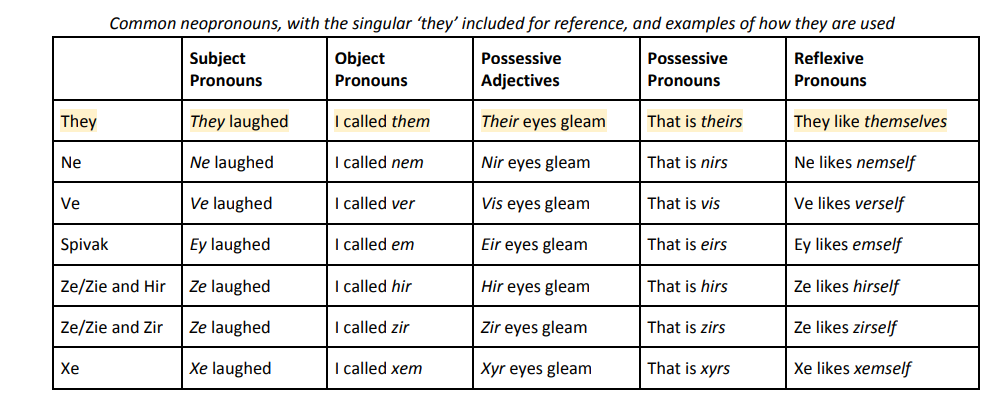The B2B tech industry isn’t run by robots (yet), but by actual, real people who exist outside of their offices and away from their laptops.
It can be easy to forget, but these people have interests, friends, and gender identities, as well as being executives and decision-makers at our favourite companies.
So if you’re a B2B marketer, inclusive language can play a huge part in ensuring your reader feels recognised and engaged.
To find out more, we spoke to Ettie Bailey-King, an inclusive and accessible communication consultant. Here’s what we learnt.
Why is inclusive language so important?
For starters, customer expectations have changed dramatically. The B2C market is rapidly adopting inclusive language, and it’s transforming the marketing industry.
If customers are used to respectful and inclusive communication in one industry, they won’t stand for less anywhere else – so B2B needs to keep up.
“We’re constantly surrounded by content – at work, at home, on social media,” says Ettie. “And thoughtful content makes us feel safe and welcomed. For example, an advert that says ‘everyone’, instead of the binary gender options of man or woman. Or an email that avoids gendered salutations like ‘Ms’ and ‘Mr’, and just says ‘Hi Ettie’. For many of us, those changes won’t feel like a big deal. But if you’re questioning your gender identity, for example, then those small changes can be the difference between a painful experience, and a safe and welcoming one.”
Even if you don’t think you’re talking to people who are trans, non-binary, or gender-nonconforming, that’s no reason to avoid using inclusive pronouns and language. According to Stonewall, around 1% of the UK population might be transgender, including non-binary people. Already, that’s roughly 600,000 people – but we’re a long way from knowing what the real figures look like.
“The comparison that activists always use is left-handedness,” says Ettie. “When left-handedness was stigmatised, numbers were around 2%. And when children were actually allowed to freely use the hand of their choice – if you look at the graphs, you’ll see an explosion in left-handedness.”
These days, around 12% of the UK write with their left hand.
There are so many reasons why inclusive writing is important – and they go beyond B2B marketing objectives.
“Inclusive writing is sometimes presented as a fun, happy add-on to make our businesses seem warmer. But it’s got a serious purpose. The world just isn’t safe for some people – for example, many transgender and gender non-conforming people are discriminated against, or at risk of terrible violence,” says Ettie. “It’s important to keep that in mind. So if we’re struggling to motivate ourselves to do the learning, we should remember that using LGBTQIA+ inclusive language has a real impact. For example, using someone’s correct pronouns can reduce their risk of suicide.”
As Ettie says, pronouns are incredibly important. To use them correctly, you’ll need to understand and be familiar with different types.
Let’s talk about chosen preferred pronouns
Pronouns are a big part of inclusive language and, for the record, they’re just that – pronouns. They’re not “chosen” or “preferred”, much like someone’s name isn’t “chosen”.
You might need to know your client’s pronouns (or your client’s client’s pronouns if you’re writing a case study about them). For example, “Matt’s Head of Copy at Radix Communications. He’s been in the role for 11 years.”
Or if you’re engaged in conversation and need to refer to somebody else: “Have you met Matt? He’s great.” Whenever you’re using pronouns, it’s important to do it correctly, even if they’re unfamiliar to you.
After “she/her”, “he/him”, and “they/them”, the most common member-defined pronouns on LinkedIn are:
- “she/they”
- “he/they”
- “they/she”
- “they/he”
- “any pronouns”
There’s a reason LinkedIn has counted “she/they” and “they/she” separately. For pronouns like these, you can’t assume someone has a preference, or what that preference is.
“Everyone’s different,” says Ettie. “When someone gives mixed pronouns, it might be because they strongly prefer the first one, they’re equally happy with each, or they’d rather you don’t use the second one and it’s just there as a backup (for example, for people who struggle to use singular ‘they’). If you can’t check with someone, I’d use the first pronoun. But if you can, take a few seconds to check which one they prefer.”
Neopronouns like “xe/xem/xyr” (pronounced zee/zem/zeer) or “ze/hir/hirs” (pronounced zee/heer/heers) are examples of popular gender-neutral pronouns, and are often used by non-binary or transgender people. You can practice using them and other gender-neutral pronouns using this tool, made 100% by gender-diverse and same-sex-attracted youth.
This table, published by the Office of Intercultural Engagement at UNC Greensboro, might be helpful: 
But while understanding different pronouns and how to use them is crucial, it’s not the only thing we can do to make our B2B writing more inclusive.
7 ways to make your writing more inclusive
Ettie gave us advice on some of the current best practices for inclusive writing, and other things you can do to make sure all your readers feel recognised.
1. Shift your team’s mindset
A lot of us have been trained to write in a gender binary way – think “ladies and gentlemen, boys and girls” – and need to go on a learning journey to transform our writing.
If you’re part of a marketing team, this shift in mindset needs to be a collective experience. Start with sharing resources like podcasts, make or join a book club, and help others get exposed to stories and people outside the gender binary.
2. Always ask if you can
If you’re not sure of someone’s pronouns (and you have the opportunity to), ask. And if you can’t, then default to gender-inclusive language until you’re sure of someone’s pronouns – which could be after you’re expected to submit a first draft.
“In B2B, it’s less likely you’re going to be speaking and learning directly from people,” says Ettie. “But describing people accurately is so important. If you don’t know what pronoun someone uses, or how they describe themselves, always check. And if you can’t – they’re unavailable and no one knows the answer – then use gender-neutral terms like ‘they’. Or, you could just use their name instead, like ‘Ashley is Sales Director and Ashley will take over the new team.’”
Ettie’s default in her own writing is to use “they”, and it’s something people have been doing since the 1300s. You can then clarify and correct pronouns in the feedback process.
3. Why default to “they” when you can use “you”?
Defaulting to “they” is definitely an inclusive option when writing about people. But if you’re writing content that’s directed to someone, you can go one step further.
Using second-person address is not only inclusive – “you” knows no gender – but also a great tool for engagement. When you speak directly to your reader, they feel involved and engaged. In short, it’s good copywriting.
Second-person address helps to keep things simple, which is also more accessible. “If there’s one rule, it’s to not overthink it,” says Ettie. “Sometimes, by trying to be inclusive we end up with long and elaborate phrases, which can weigh our copy down. For example, if you’re trying to write a concise slogan, do you need to say ‘people who menstruate’ or ‘people with a vulva’? Maybe you can just say ‘you’.”
4. Treat pronouns like names
If you’re confused or in doubt about unfamiliar pronouns, Lal Zimman, a sociocultural linguist, says to treat them like they’re names. Here’s a rundown of what Lal says:
You can’t tell what a person’s name is just from looking at them, so if you want to know it you have to ask. And asking someone’s name is a totally normal question. In fact, it’s more likely to be considered rude if you don’t ask for someone’s name when first meeting them.
Names are treated as facts, and people don’t generally argue about them. It’s important to remember names, even if they’re unusual, or hard to pronounce or spell. And it’s important to get someone’s name right, even if you don’t like it or them.
People don’t insist that there are a limited number of names, and they know there are names they’ve never heard of. And sometimes people change their names, too – for example, when getting married – and that’s totally accepted.
5. And if you mess up…
Politely apologise, correct yourself, and move on. And don’t forget to be kind to yourself.
“We do need to gender people correctly, because it really matters,” says Ettie. “But while we’re learning, we should give ourselves permission to find it difficult and confusing. It really can be! Don’t panic or overthink it. Be firm but patient with yourself – you’ll be amazed how quickly you can learn.”
6. Be a role model
If you’re inclusive with pronouns in your everyday life, in your work and in your style guide, then it’ll translate into the way you write.
You can normalise talking about pronouns by including them in your email signature, your on-screen nickname, on social media profiles and business cards, or by advertising them on your person (think badges and stickers).
And you can go one step further by incorporating pronouns into your marketing. For example, include guest speakers’ pronouns on event invitations and web content.
By being open with pronouns, you’re helping to avoid potentially uncomfortable and awkward conversations. For example, if you’re meeting with someone virtually who has recently changed their pronouns, they can just change their on-screen nickname.
The same goes for people you’re emailing. There’s no need to use “Mr” and “Mrs”, or “Sir/Madam” as your default address. You can just say “hi”, “hello”, “good morning”, or use their name if you know it.
7. Be flexible
You’re not learning a set of rules once and forever. You’re learning something that may be true for now, and might not be true in a year, and that’s okay. Society is changing, and with it people’s pronouns and best practices.
“So you might meet Ashley now, with pronouns ‘they/them’. In a few years, Ashley might be ‘he/him’. That’s okay,” says Ettie. “Don’t panic if people change their pronouns or names. Be grateful that they share them with you.”
Flexibility is a big part of shifting your mindset and changing your patterns. It’s about always putting people before any set of rules or guidelines – including this one. Because for every rule you can come up with, there will always be people who don’t align with it (and that’s okay too).
Here’s where to learn more
Creating inclusive content can make all the difference to your reader feeling accepted, included, and recognised – which is good news for your people, your marketing, and the world in general.
If you’d like to learn more about inclusive communication, check out Ettie Bailey-King’s website Fighting Talk or sign up to her newsletter for quick, practical tips on how you can make your content more inclusive and accessible.
And to hear more about B2B copywriting and receive regular content writing tips and advice, sign up to our newsletter.
—
Please note: this blog post was researched and written by one of my talented colleagues.
I have no desire to take credit for someone else’s work; however, posts about inclusion sometimes attract unwelcome attention online from oversensitive weirdos who seem bizarrely threatened by the idea of treating other people with basic decency and respect.
I don’t want to risk subjecting my colleague to any abuse – which is why my name’s at the top of the page.
David



